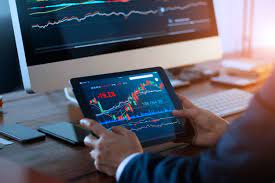In the ever-evolving landscape of financial markets, Contract for Difference (CFD) trading has embraced the digital age, leveraging advanced technologies and adapting to emerging trends. The intersection of finance and technology has transformed the way traders engage with CFDs, offering new opportunities and enhancing the overall trading experience. In this article, we explore the impact of technology and current trends shaping CFD trading in the digital age.
**1. Online Trading Platforms:**
The digital age has ushered in a paradigm shift with the widespread adoption of online trading platforms. These platforms provide traders with real-time market data, advanced charting tools, and seamless execution of CFD trades. Accessibility and user-friendly interfaces have democratized cfd trading, allowing individuals from around the world to participate in financial markets with ease.
**2. Mobile Trading Apps:**
The rise of mobile technology has enabled traders to carry the financial markets in their pockets. Mobile trading apps offer on-the-go access to CFD markets, allowing traders to monitor positions, execute trades, and stay informed about market developments anytime, anywhere. The convenience of mobile trading apps aligns with the dynamic nature of CFD markets.
**3. Algorithmic and Automated Trading:**
Algorithmic trading and automated strategies have become integral to CFD trading. Traders can utilize algorithms to analyze market data, identify trading opportunities, and execute trades automatically based on predefined criteria. This approach enhances efficiency, removes emotional biases, and allows for precise execution, especially in fast-paced markets.
**4. Artificial Intelligence (AI) and Machine Learning:**
AI and machine learning algorithms have gained prominence in CFD trading. These technologies analyze vast datasets to identify patterns, trends, and potential market movements. Traders can leverage AI-driven insights for more informed decision-making, risk management, and the development of sophisticated trading strategies.
**5. Social Trading Networks:**
Social trading platforms have transformed CFD trading into a collaborative and community-driven experience. Traders can share insights, strategies, and performance metrics on these networks, allowing less experienced traders to learn from seasoned professionals. Social trading networks blend technology with social interaction, creating a diverse and interconnected trading community.
**6. Cryptocurrency CFDs:**
The advent of cryptocurrencies has added a new dimension to CFD trading. Traders can speculate on the price movements of digital assets like Bitcoin, Ethereum, and other cryptocurrencies without owning the underlying assets. Cryptocurrency CFDs have gained popularity for their liquidity and the ability to trade both rising and falling markets.
**7. Enhanced Risk Management Tools:**
Technology has empowered traders with sophisticated risk management tools. Stop-loss orders, take-profit orders, and other risk mitigation features are seamlessly integrated into trading platforms. These tools allow traders to define and manage risk levels, enhancing overall portfolio management.
**8. Regulatory Technology (RegTech):**
Compliance with regulatory requirements is a critical aspect of CFD trading. Regulatory technology, or RegTech, leverages technology solutions to streamline compliance processes, monitor trading activities, and ensure adherence to financial regulations. This technology-driven approach enhances transparency and trust within the CFD trading ecosystem.
**9. Real-Time Market Data and Analysis:**
The digital age has elevated the availability and speed of market data. Traders can access real-time price quotes, news feeds, and market analysis, enabling them to make timely and informed decisions. This instantaneous access to information is a cornerstone of effective CFD trading in the digital era.
**10. Cybersecurity Measures:**
As CFD trading becomes more digitized, cybersecurity has become a paramount concern. Robust cybersecurity measures, including encryption, secure login protocols, and multi-factor authentication, are implemented by trading platforms to safeguard the integrity and confidentiality of traders’ accounts and sensitive information.
In conclusion, CFD trading in the digital age is characterized by the integration of cutting-edge technologies and the adaptation to evolving trends. As technology continues to shape the financial landscape, CFD traders can benefit from enhanced accessibility, automation, and innovative tools. Staying informed about these technological advancements and embracing emerging trends is crucial for traders looking to navigate and thrive in the dynamic world of CFD trading.


